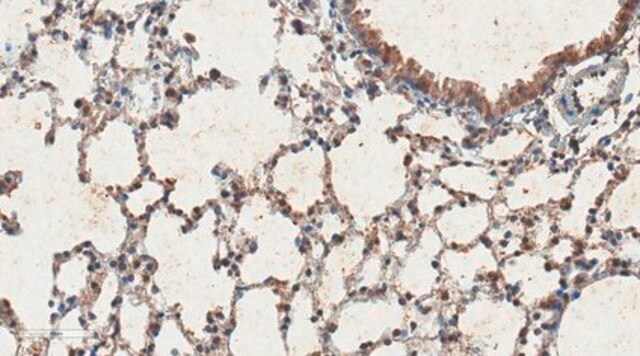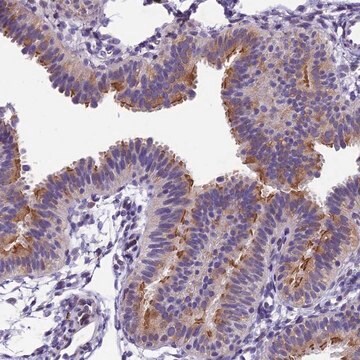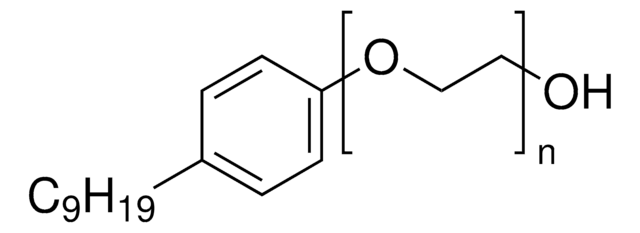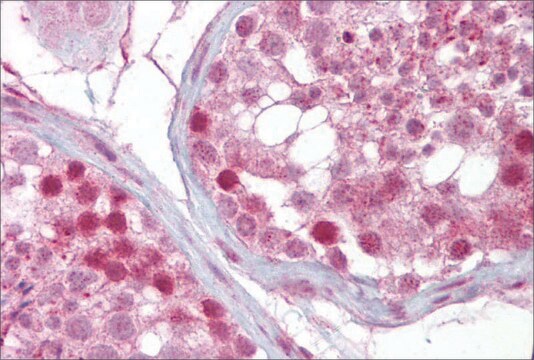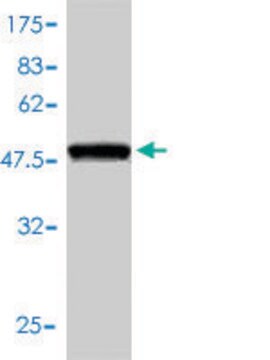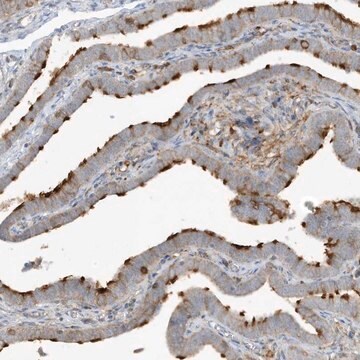ABC932
Anti-IFT88 Antibody
serum, from rabbit
Sinonimo/i:
Intraflagellar transport protein 88 homolog, Polaris, Recessive polycystic kidney disease protein Tg737, Tetratricopeptide repeat protein 10, TgN(Imorpk)737Rpw, TPR repeat protein 10
About This Item
Prodotti consigliati
Origine biologica
rabbit
Livello qualitativo
Forma dell’anticorpo
serum
Tipo di anticorpo
primary antibodies
Clone
polyclonal
Reattività contro le specie
rat, human, mouse
Reattività contro le specie (prevista in base all’omologia)
bovine (based on 100% sequence homology)
tecniche
electron microscopy: suitable
immunocytochemistry: suitable
immunofluorescence: suitable
western blot: suitable
N° accesso NCBI
N° accesso UniProt
Condizioni di spedizione
dry ice
modifica post-traduzionali bersaglio
unmodified
Informazioni sul gene
bovine ... Ift88(514177)
human ... IFT88(8100)
mouse ... Ift88(21821)
rat ... Ift88(305918)
Descrizione generale
Specificità
Immunogeno
Applicazioni
Western Blotting Analysis: A representative lot detected a greatly reduced Tg737/Polaris expression in lysate from E11.5 mouse embryo limbs with conditional mesenchymal Ift88-knockout (prx1cre;Ift88fl/n) when compared with lysate from a wild-type littermate (Haycraft, C.J., et al. (2007). Development. 134(2):307-316).
Immunocytochemistry Analysis: A representative lot detected IFT88 (Tg737/Polaris) cellular localization in paraformaldehyde-fixed rat and murine sperm cells, rat round spermatids, as well as elongating spermatids from Ift88 mutant mice (Kierszenbaum, A.L., et al. (2011). Dev. Dyn. 240(3):723-736).
Immunocytochemistry Analysis: A representative lot detected Tg737/Polaris immunoreactivity associated with the cilium of cultured limb bud cells isolated from wild-type mouse E11.5 embryos by fluorescent immunocytochemistry, while cilia were absent in cells from Tg737Δ2–3β-gal embryos (Haycraft, C.J., et al. (2005). PLoS Genet. 1(4):e53).
Electron Microscopy Analysis: A representative lot detected IFT88 (Tg737/Polaris) localization in rat round spermatids and fractionated manchettes (Kierszenbaum, A.L., et al. (2011). Dev. Dyn. 240(3):723-736).
Immunofluorescence Analysis: A representative lot detected polaris immunoreactivity in both dental epithelium (DE) and dental mesenchyme (DM) of lower molar frontal sections from E13.5 and E16.5 embryonic mice (Ohazama, A., et al. (2009). Development. 136(6):897-903).
Immunofluorescence Analysis: A representative lot immunostained primary cilium on epithelial and mesenchymal cells of the skin and hair follicle using OCT-embedded frozen skin sections from both mouse embryos and adult mice (Lehman, J.M., et al. (2009). J. Invest. Dermatol. 129(2):438-448).
Immunofluorescence Analysis: A representative lot detected Ift88 (Tg737/Polaris) immunoreactivity enriched at the base and tip of the hair cell (HC) kinocilia in the ciliary axonemes by fluorescent immunohistochemistry using 4% paraformaldehyde-fixed inner ear cochlear whole mounts prepared from mouse E14.5 embryos (Jones, C., et al. (2008). Nat. Genet. 40(1):69-77).
Immunofluorescence Analysis: A representative lot immunostained cilium in mesenchymal and ectodermal cells in formaldehye-fixed, OCT-embedded frozen limb bud sections from mouse E11.5 embryos by fluorescent immunohistochemistry. Conditional mesenchymal Ift88-knockout (prx1cre;Ift88fl/n) selectively abolished Tg737/Polaris immunoreactivity in the mesenchyme, but not the ectoderm layer (Haycraft, C.J., et al. (2007). Development. 134(2):307-316).
Immunofluorescence Analysis: A representative lot detected Tg737/Polaris immunoreactivity at the base and distal tip of cilium in mesenchymal and ectodermal cells in OCT-embedded frozen limb bud sections from mouse E10.5 embryos by fluorescent immunohistochemistry (Haycraft, C.J., et al. (2005). PLoS Genet. 1(4):e53).
Apoptosis & Cancer
Developmental Signaling
Qualità
Western Blotting Analysis: A 1:200 dilution of this antibody detected IFT88 in 50 µg of mouse kidney tissue lysate.
Descrizione del bersaglio
Stato fisico
Stoccaggio e stabilità
Handling Recommendations: Upon receipt and prior to removing the cap, centrifuge the vial and gently mix the solution. Aliquot into microcentrifuge tubes and store at -20°C. Avoid repeated freeze/thaw cycles, which may damage IgG and affect product performance.
Altre note
Esclusione di responsabilità
Non trovi il prodotto giusto?
Prova il nostro Motore di ricerca dei prodotti.
Codice della classe di stoccaggio
12 - Non Combustible Liquids
Classe di pericolosità dell'acqua (WGK)
WGK 1
Punto d’infiammabilità (°F)
Not applicable
Punto d’infiammabilità (°C)
Not applicable
Certificati d'analisi (COA)
Cerca il Certificati d'analisi (COA) digitando il numero di lotto/batch corrispondente. I numeri di lotto o di batch sono stampati sull'etichetta dei prodotti dopo la parola ‘Lotto’ o ‘Batch’.
Possiedi già questo prodotto?
I documenti relativi ai prodotti acquistati recentemente sono disponibili nell’Archivio dei documenti.
Il team dei nostri ricercatori vanta grande esperienza in tutte le aree della ricerca quali Life Science, scienza dei materiali, sintesi chimica, cromatografia, discipline analitiche, ecc..
Contatta l'Assistenza Tecnica.